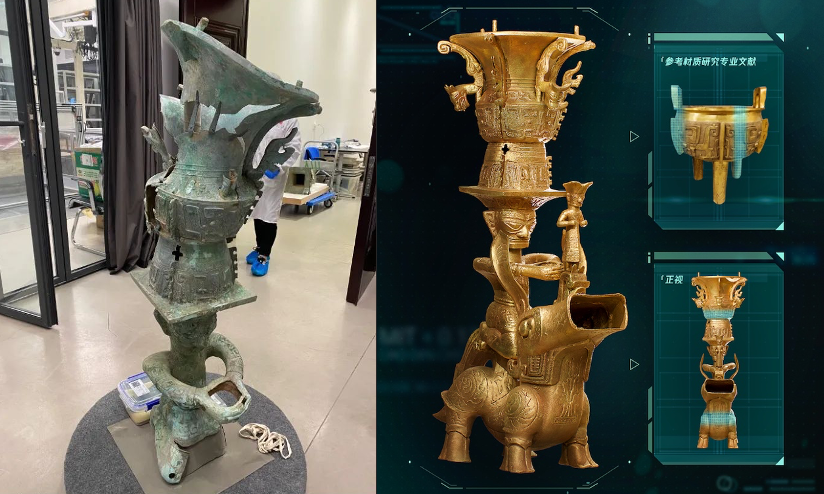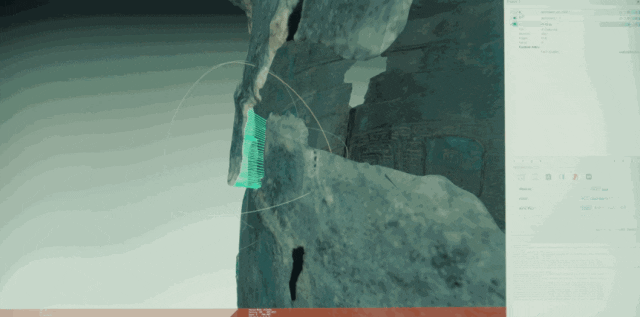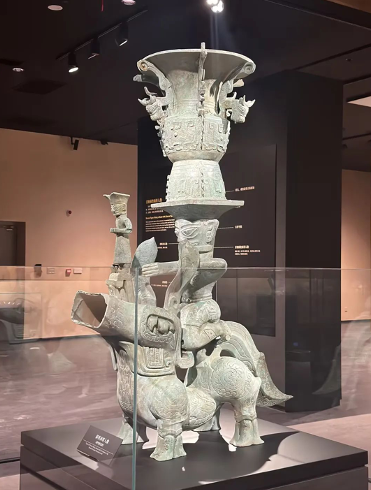An Ancient Statue Digitally Restored: How Tencent Digital Solutions Is Opening Doors for Cultural Heritage
A 4,500-year-old bronze statue, for centuries in broken and bent pieces, now appears in its dazzling, original form. The reassembly is a remarkable development for archaeology — it’s digital. Those pieces rejoined offer a glimpse into the culture of an ancient civilization that existed in Sanxingdui, in China’s Sichuan Province.
The ground-breaking restoration was a collaboration between the Digital Culture Laboratory under Tencent’s Sustainable Social Value organization and the Sichuan Institute of Cultural Relics and Archaeology. Using new-generation digital technologies such as artificial intelligence (AI), big data, cloud computing, knowledge graphs and computer vision, thousands of relics and fragments unearthed from the Sanxingdui Ruins are being scanned, analyzed and put through human-machine deductions and calculations to determine whether or how they can be pieced back together. This helps to greatly enhance efficiency of the research process and presents new scenarios that may not have been possible to verify through more traditional means.
 The unearthed, cleaned up cultural relics vs. the digital restoration by AI.
The unearthed, cleaned up cultural relics vs. the digital restoration by AI.
The bronze statue depicts a mythical four-legged beast with a worshipper kneeling on its back, who in turn is balancing a giant vessel on their own head and a human figure on the animal’s. The beast and the kneeling worshipper were unearthed separately from two different pits at the archaeological site in 2021. Through markings on the beast’s back and the worshipper’s knees, the team speculated they may have been part of the same statue. Three-dimensional modeling and AI analysis of size, proportion, weight and balance helped the team to conclude that the two objects belonged together. Computer vision aided in straightening the bent features and filling in missing pieces, such as an ear and an arm. The next step of digital reconstruction is breathtaking, giving clues to the grand rituals of a civilization thousands of years ago that came to light only in the last century. The project team further studied the multi-fragment splicing algorithm based on 3D deep learning to support the splicing calculation in the case of missing fragments. The algorithm has been verified on simulated datasets.
 Tencent PCG ARC Lab uses AI algorithms for cultural relic’s damage and deterioration analysis.
Tencent PCG ARC Lab uses AI algorithms for cultural relic’s damage and deterioration analysis.
Sanxingdui is believed to be part of the ancient Shu kingdom. Located on the banks of the Yazi River in what is today’s Guanghan city, there is no written text on how the Shu people lived, or why they seemed to have disappeared. Clues to their existence come from artifacts dug out from eight archaeological pits. While some relics were discovered in the late 1920s, intensive archaeological excavations began only in the 1980s when the first two pits were unearthed. As work progressed, six more pits came to light in 2021.
Thousands of relics have since been uncovered in bronze, pottery, ivory and jade. There are meters-high statues and figures with protruding eyes, some wearing gold masks; there are utensils made from ivory and jade. All are crafted with sophistication, hinting not only at a technologically advanced civilization, but also earlier than originally believed.
Tencent’s contributions to the digital restoration process are featured in a video unveiled as part of a new exhibition hall opened at Sanxingdui Museum in July 2023. The unearthed relics and the 3D-printed version of the restoration are also on display in the new exhibition hall. In addition to helping restore relics and reconstruct their original forms, Tencent will also support the museum to classify the relics and develop a digital archive to label and store the large quantity of data generated. All of this will further the continuing work on site to try and piece together the art, religious beliefs, cultural exchanges and the social system of a kingdom that remains an enigma.
 The 3D-printed version of the restoration are also on display in the new exhibition hall.
The 3D-printed version of the restoration are also on display in the new exhibition hall.
The digital solutions developed for Sanxingdui bring the potential of a new model for the future development of archaeology. “There is more to the work we are doing than just archaeology,” said Zhan Shu, Head of Tencent’s SSV Digital Culture Laboratory. “Through technology, we would like to enhance the younger generations’ understanding and interest in cultural heritage.” To this end, Tencent is also partnering with Sanxingdui Museum to raise awareness on the important find there and make it relevant to young people. “An immersive experience to see what the objects looked like when they were first created way back when would be very powerful,” said Shu. The project will incorporate elements of the Shu people’s history and culture into video games, music, and literature so that the past can transcend time to become a part of the present.
Guided by its Tech for Good vision, Tencent is steadfast in its commitment to supporting cultural preservation, appreciation and awareness.
Sanxingdui is currently under consideration for a UNESCO World Heritage listing.


